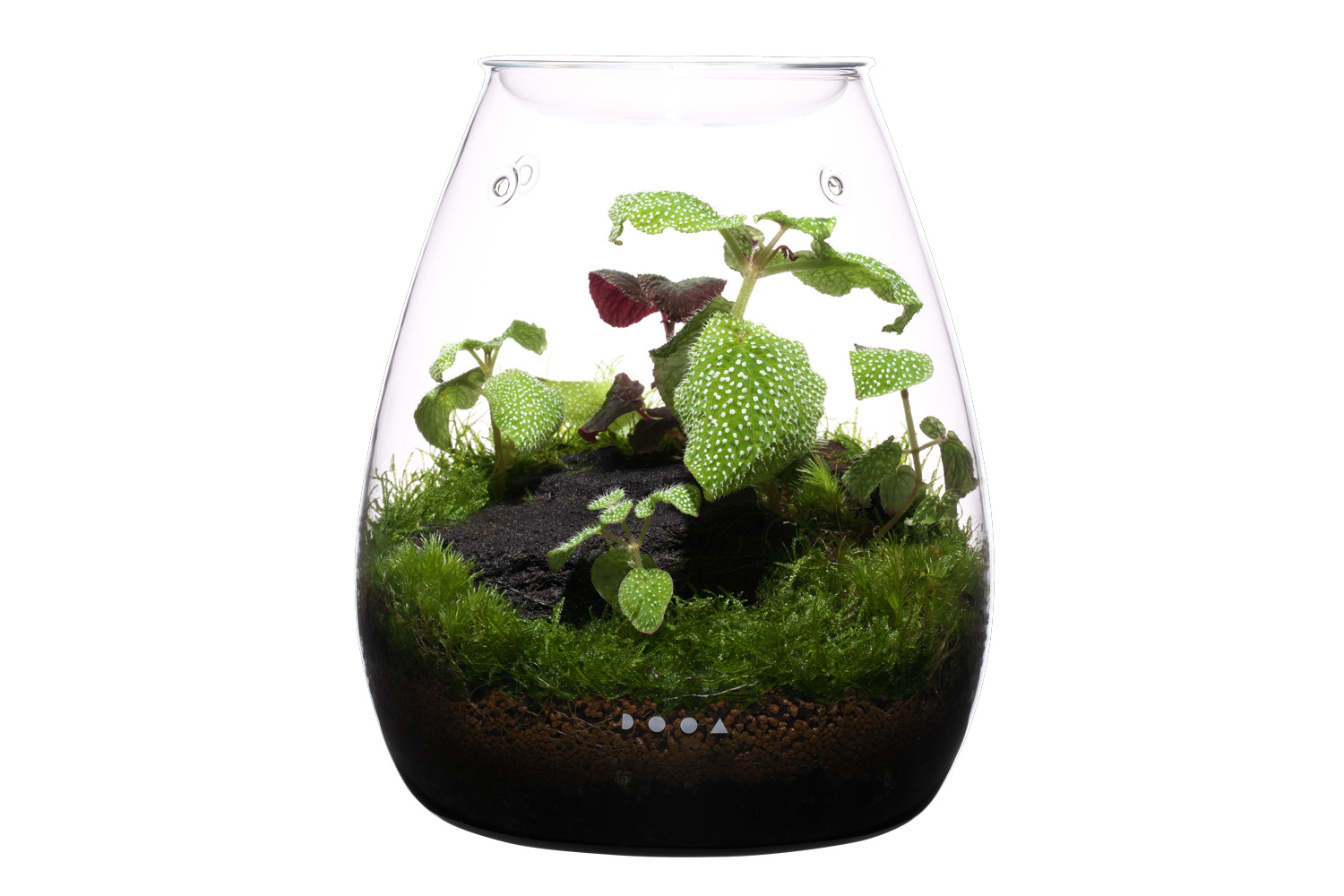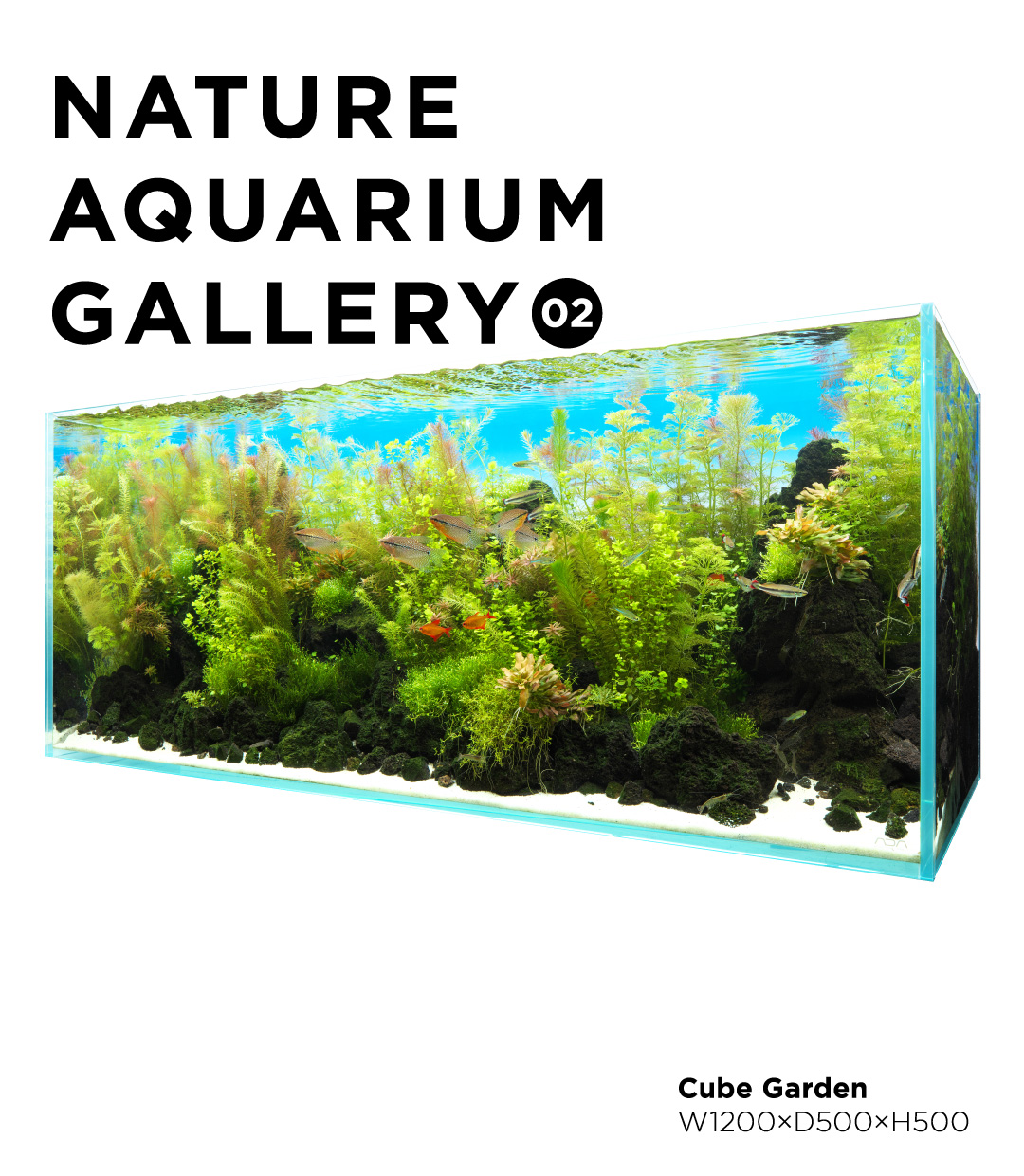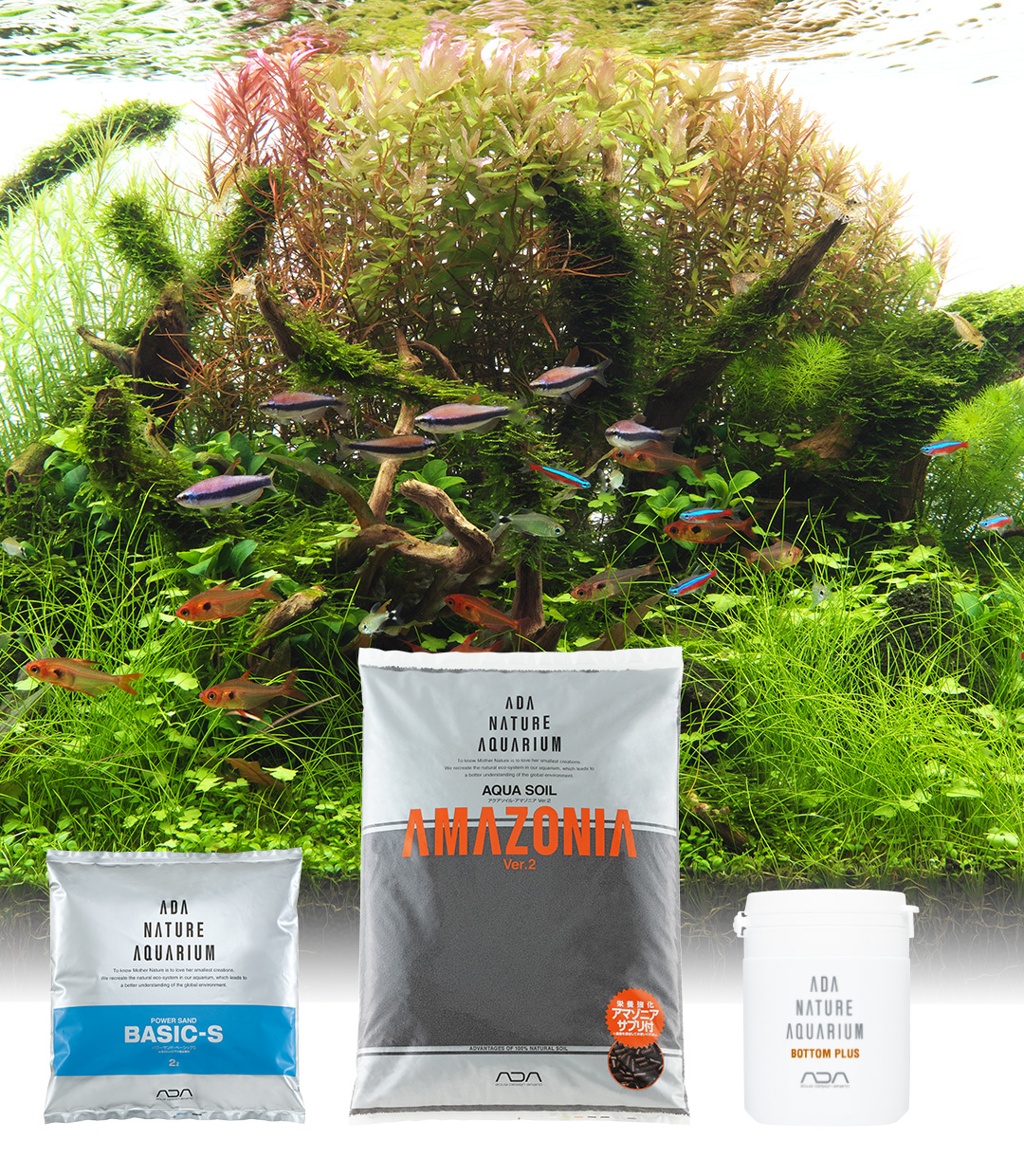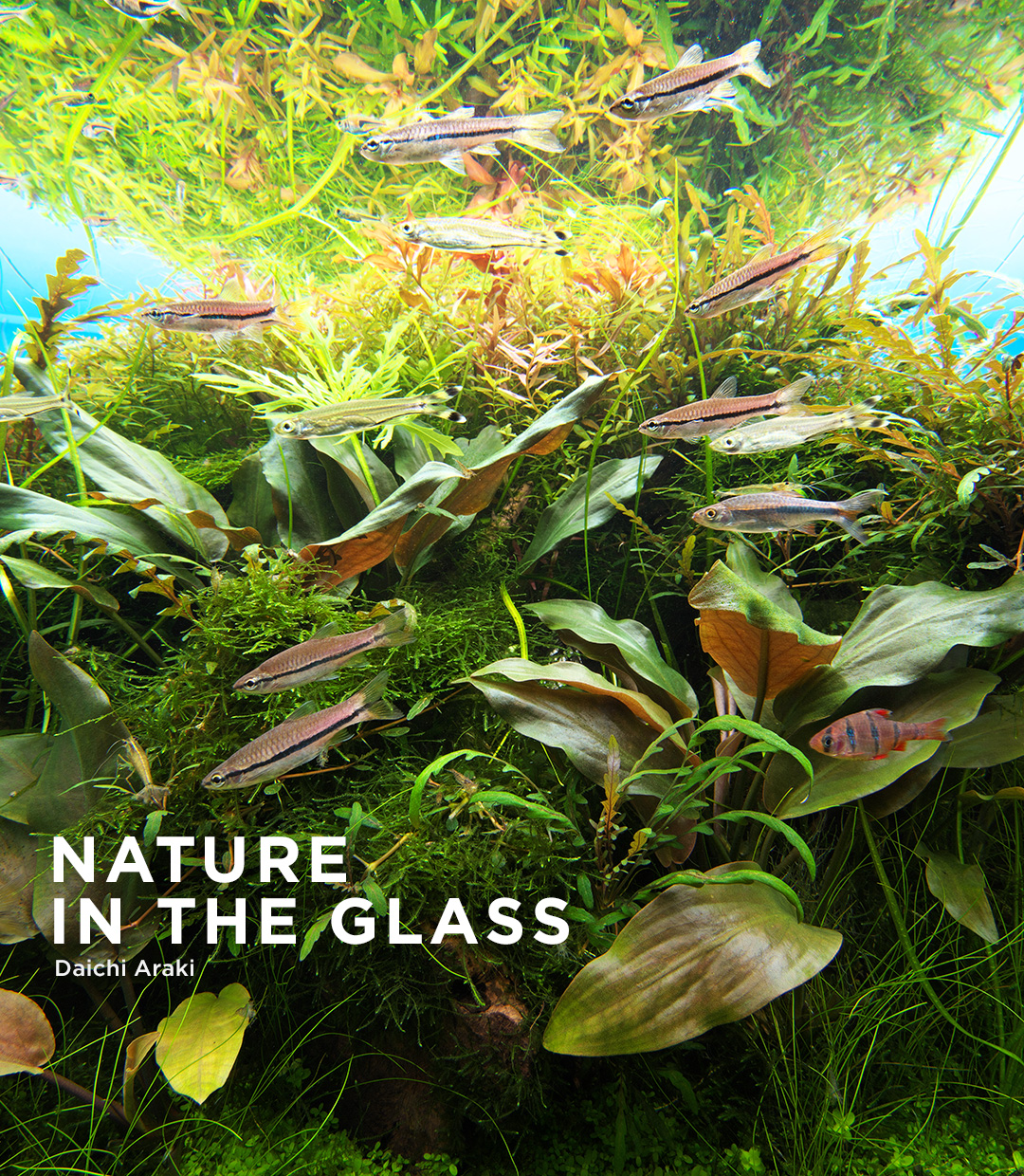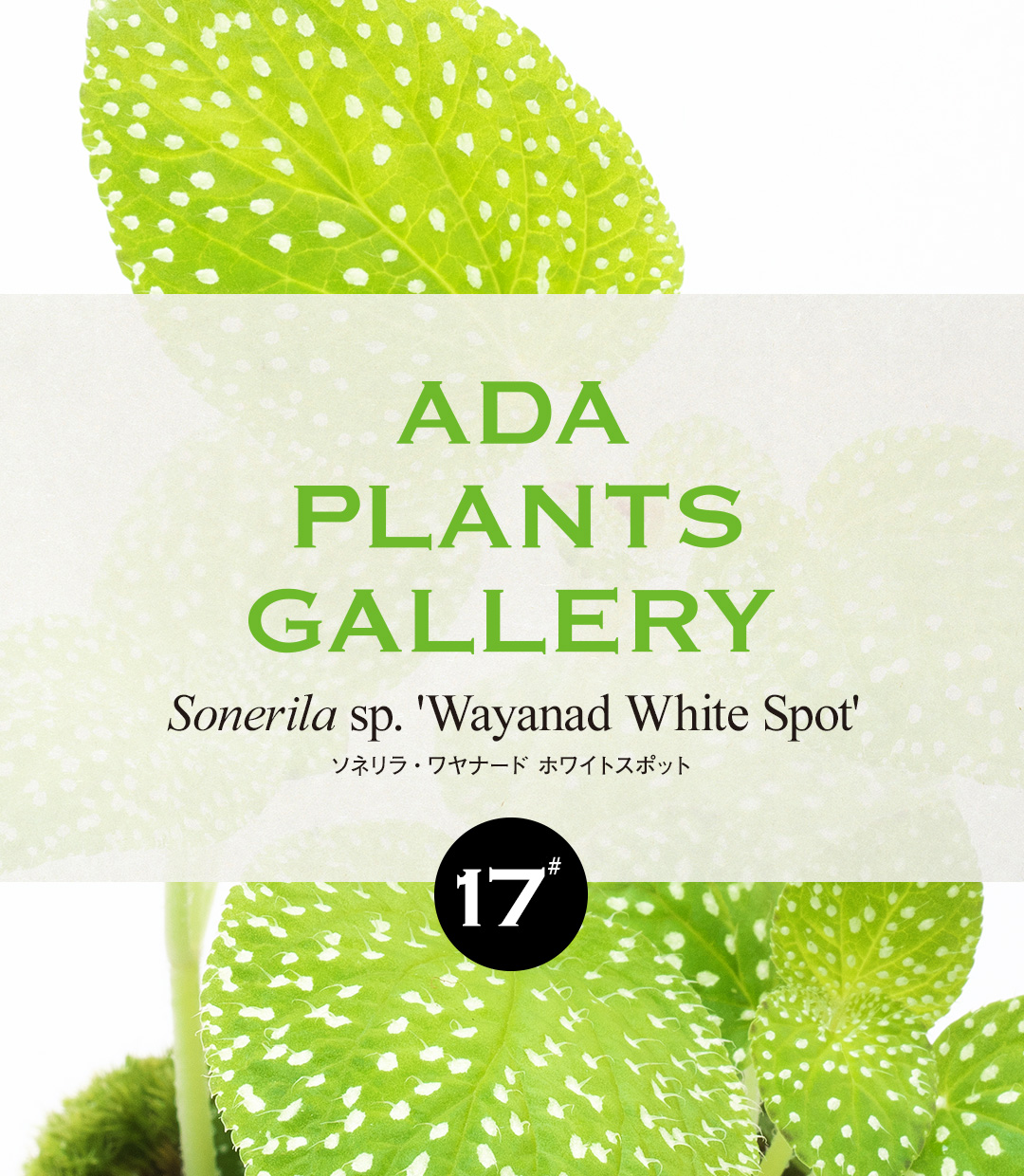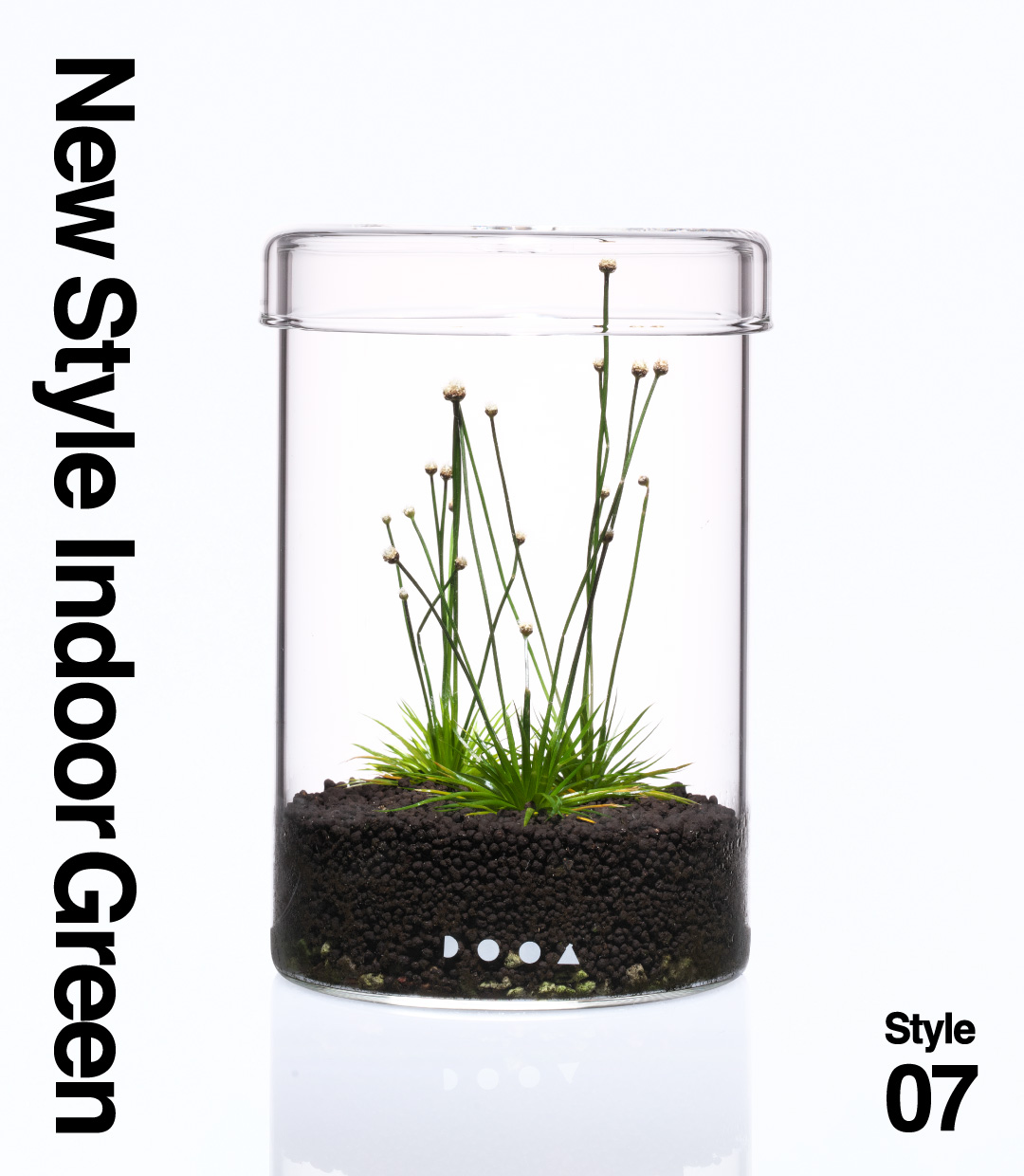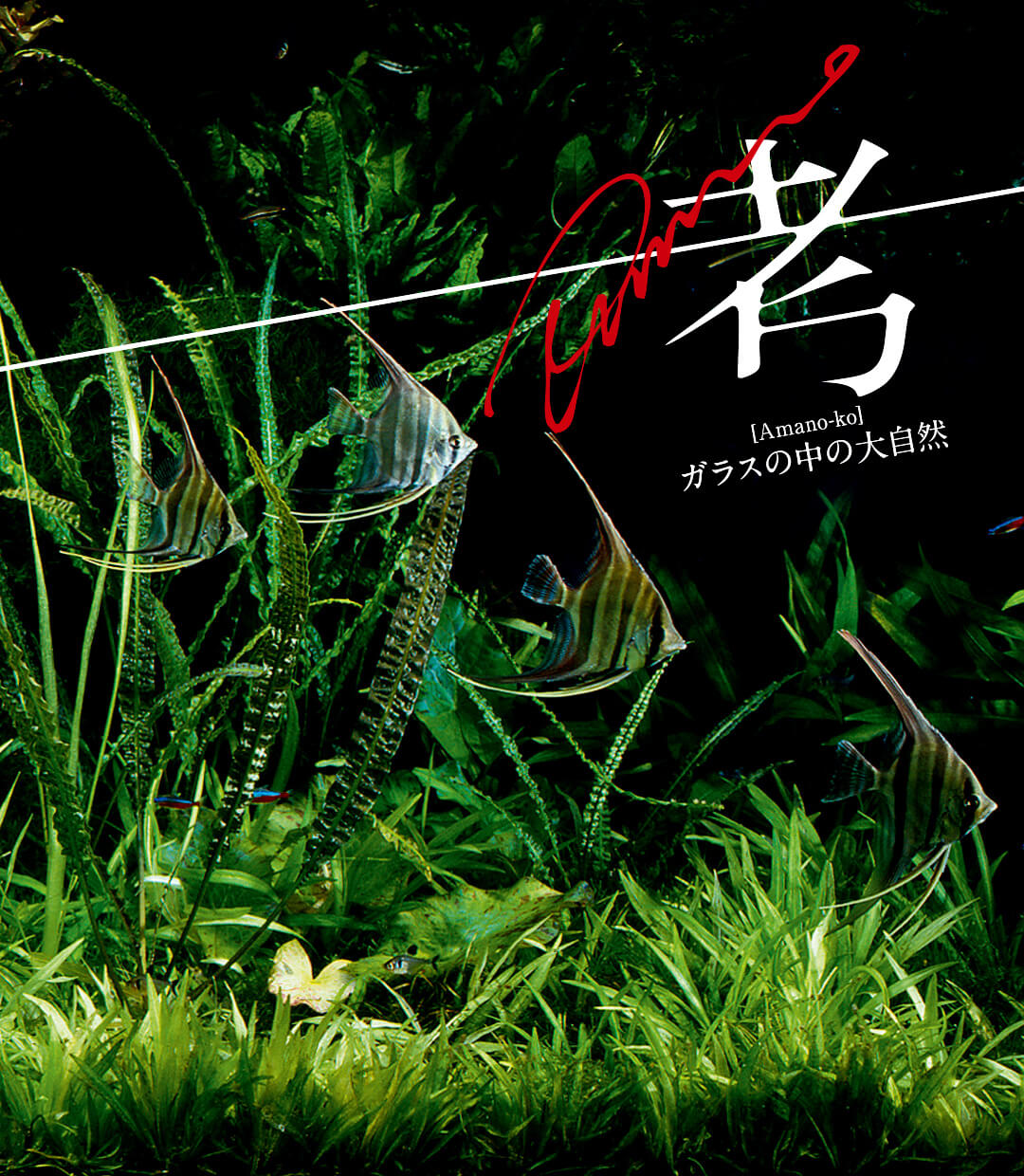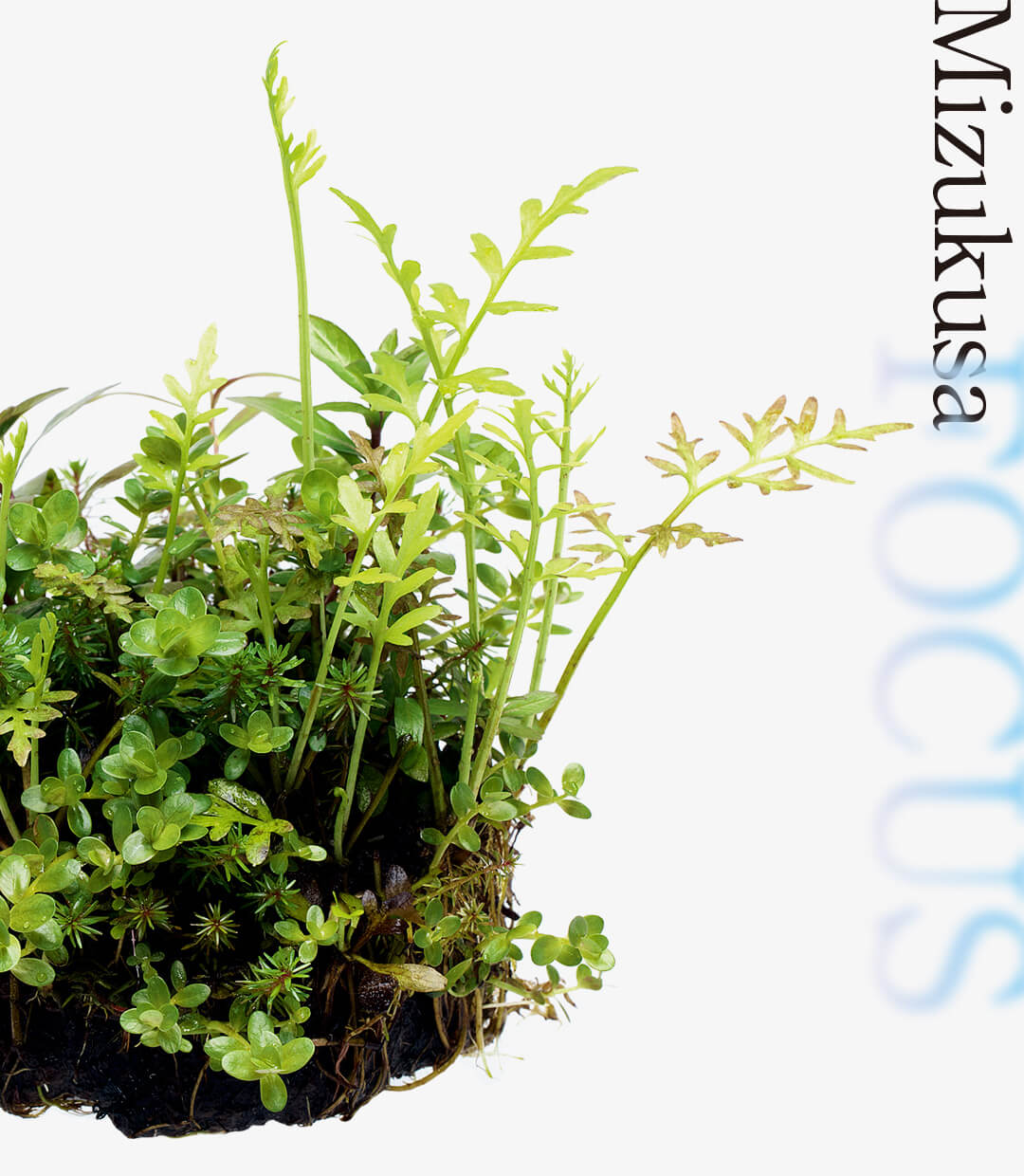ADA PLANTS GALLERY #17 Sonerila sp. ‘Wayanad White Spot’
ADA’s Research and Development Department, called the Green Lab, develops a wide variety of greenery products. In this article, we would like to share with you some interesting bits of trivia about the plants produced in the lab, and a part of their true nature we see from time to time.
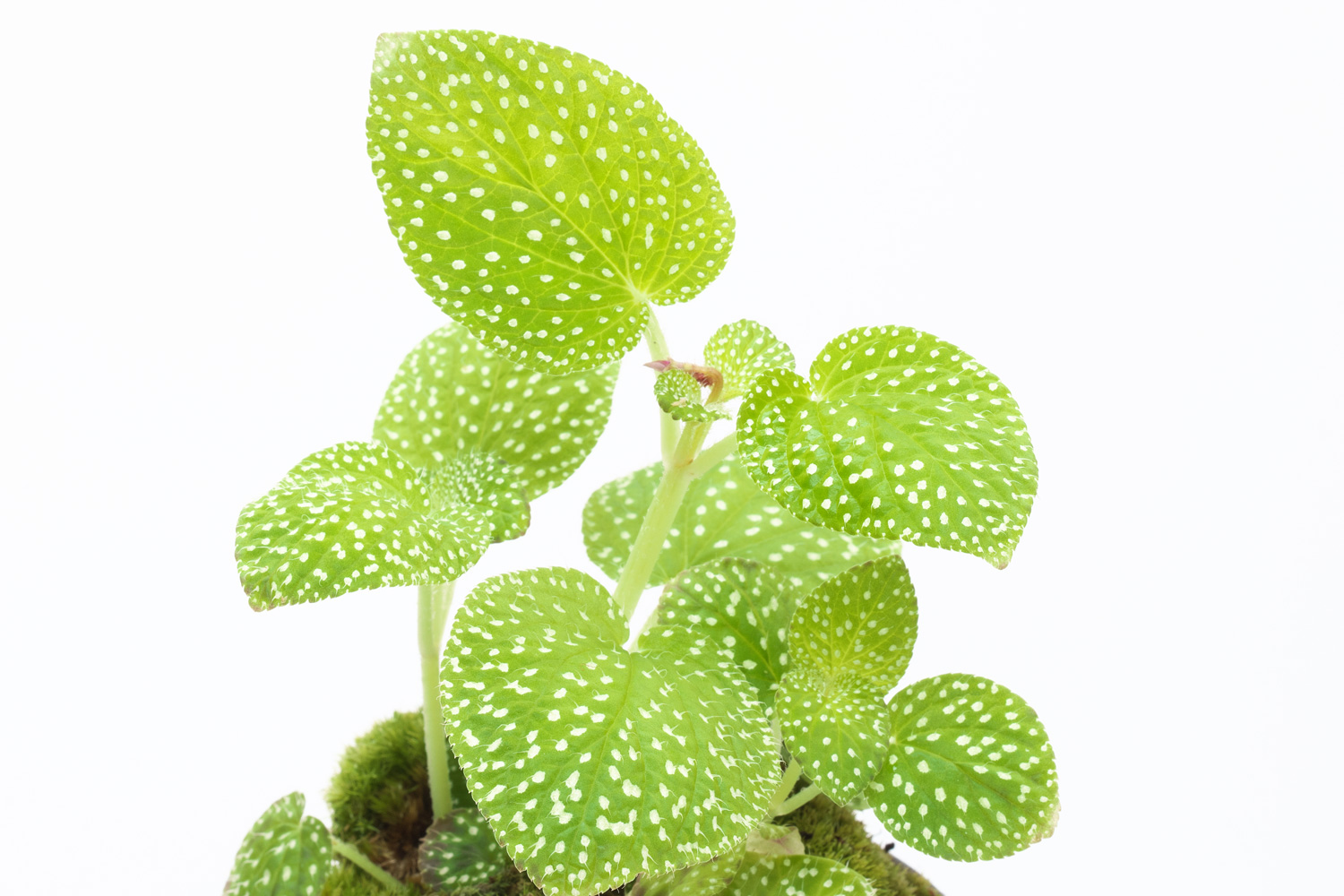
Beautiful Sonerila in India
Sonerila sp. ‘Wayanad White Spot’ is a member of the Melastomataceae family found in the tropical cloud forests of Kerala, southwestern India, at an altitude of around 1,000 meters. It grows wild, clinging to moist, steep slopes that are also thick with ferns, begonias, and Urticaceae. The heart-shaped rounded leaves have white dots, and the flowers have three pink petals. In its native habitat, it has a tuber and is thought to have a dormant season, perhaps due to the presence of wet and dry seasons, but under glass container cultivation, it seems to have difficulty entering dormancy after the flowering season is over.
Sonerila sp. ‘Wayanad White Spot’ is a member of the Melastomataceae family found in the tropical cloud forests of Kerala, southwestern India, at an altitude of around 1,000 meters. It grows wild, clinging to moist, steep slopes that are also thick with ferns, begonias, and Urticaceae. The heart-shaped rounded leaves have white dots, and the flowers have three pink petals. In its native habitat, it has a tuber and is thought to have a dormant season, perhaps due to the presence of wet and dry seasons, but under glass container cultivation, it seems to have difficulty entering dormancy after the flowering season is over.
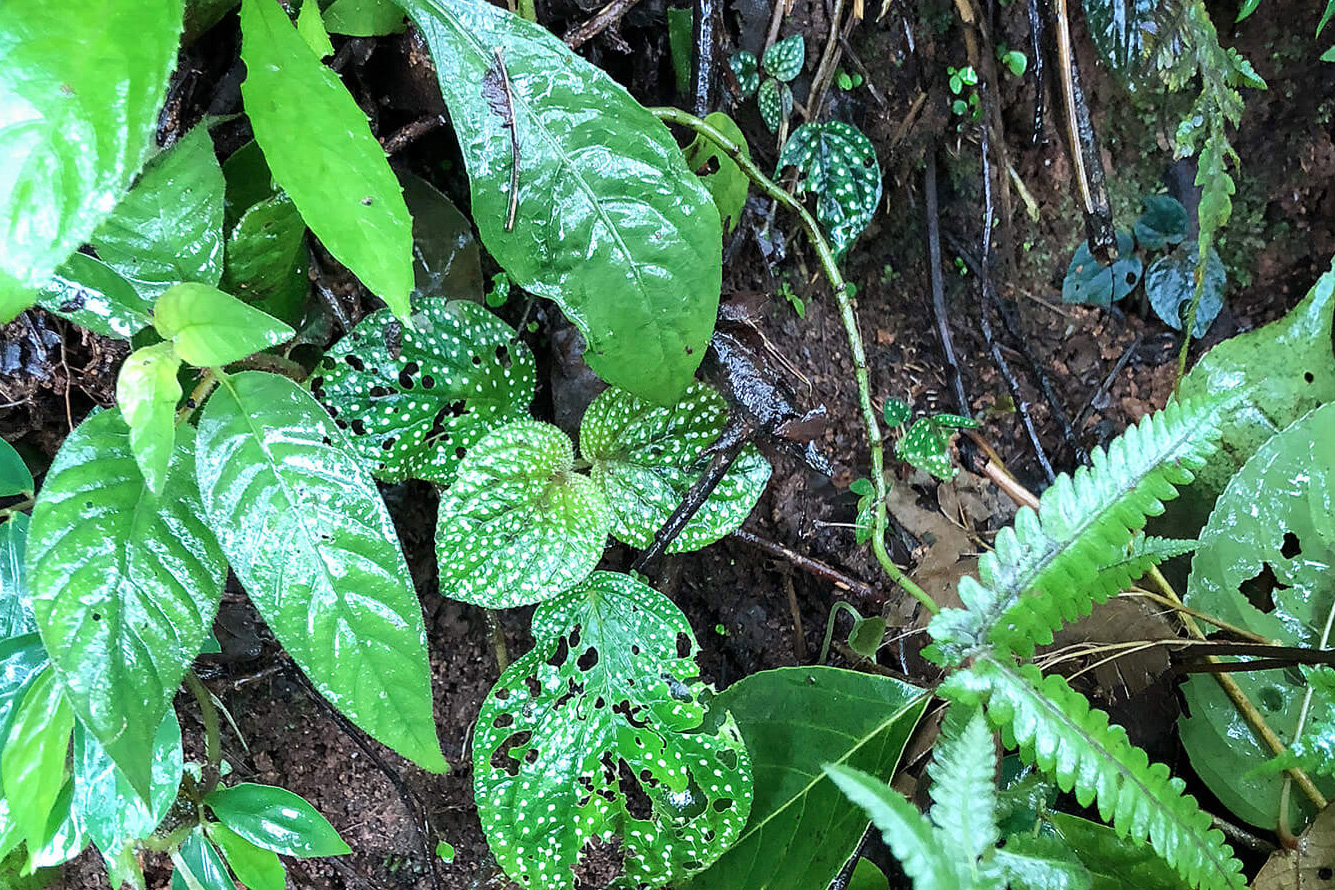
Leaf trichomes
Many Sonerila species, especially species with white spots, have trichomes on the surface of their leaves. Sonerila sp. ‘Wayanad White Spot’ is easy to observe because the trichomes are relatively long, indicating that they grow regularly rather than randomly. The hairs always seem to develop from the white spots, and the tips of the hairs curl toward the leaf margin. We don’t know whether these trichomes are developed for condensing or reflecting light, or whether they are for insect repellent, but the enigmatic structures lining on the leaves seem to make this species more attractive.
Many Sonerila species, especially species with white spots, have trichomes on the surface of their leaves. Sonerila sp. ‘Wayanad White Spot’ is easy to observe because the trichomes are relatively long, indicating that they grow regularly rather than randomly. The hairs always seem to develop from the white spots, and the tips of the hairs curl toward the leaf margin. We don’t know whether these trichomes are developed for condensing or reflecting light, or whether they are for insect repellent, but the enigmatic structures lining on the leaves seem to make this species more attractive.
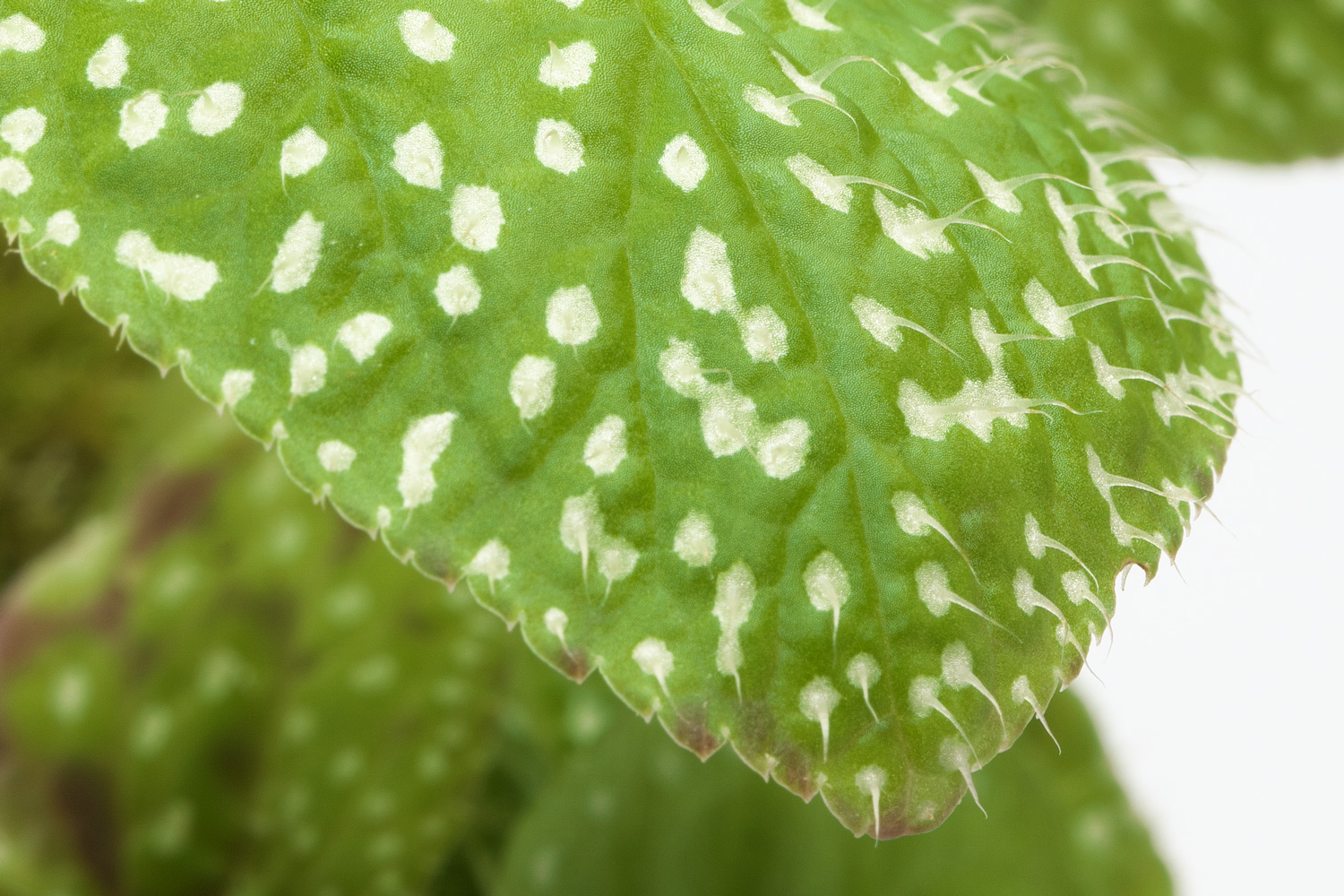
Wayanad Red
Sonerila sp. ‘Wayanad White Spot’ sometimes has reddish leaves, which may be a partial appearance of another type of trait. As you may have already noticed, the photos of the native habitat in the previous explanation also show non-white-spot types. The burgundy-colored, velvety, spotless type is the same as the white-spotted type, which grew in the same area. The Green Lab team calls this type Sonerila sp. ‘Wayanad Red’, and it is currently being propagated. At first glance, this type looks plain, but it reminds us of the depth of diversity of the genus Sonerila.
Sonerila sp. ‘Wayanad White Spot’ sometimes has reddish leaves, which may be a partial appearance of another type of trait. As you may have already noticed, the photos of the native habitat in the previous explanation also show non-white-spot types. The burgundy-colored, velvety, spotless type is the same as the white-spotted type, which grew in the same area. The Green Lab team calls this type Sonerila sp. ‘Wayanad Red’, and it is currently being propagated. At first glance, this type looks plain, but it reminds us of the depth of diversity of the genus Sonerila.
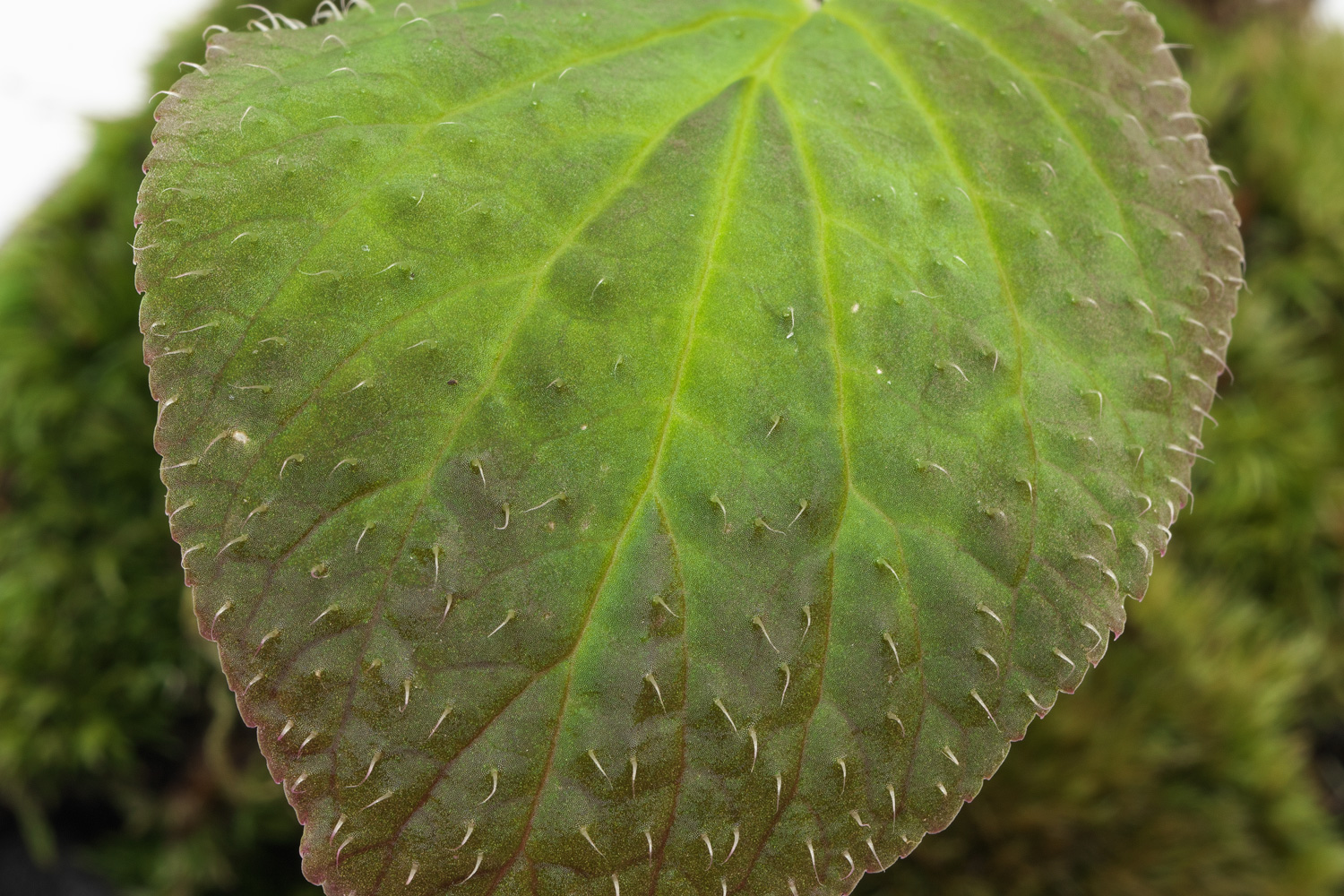
Glass container cultivation is optimum
Sonerila sp. ‘Wayanad White Spot’ is easy to grow, and it grows quickly after planting and rarely loses its condition. It is useful as an eye-catching point in a full-scale layout in a System Paluda, but it is also attractive enough on its own to be grown in a Glass Pot, SHIZUKU. It is recommended to grow at a slow growth rate with Jungle Base and Tropical River Soil. It grows well in poor soil, but if you want it to flower, use Wabi-Kusa Mist to supply nutrients.
Sonerila sp. ‘Wayanad White Spot’ is easy to grow, and it grows quickly after planting and rarely loses its condition. It is useful as an eye-catching point in a full-scale layout in a System Paluda, but it is also attractive enough on its own to be grown in a Glass Pot, SHIZUKU. It is recommended to grow at a slow growth rate with Jungle Base and Tropical River Soil. It grows well in poor soil, but if you want it to flower, use Wabi-Kusa Mist to supply nutrients.
